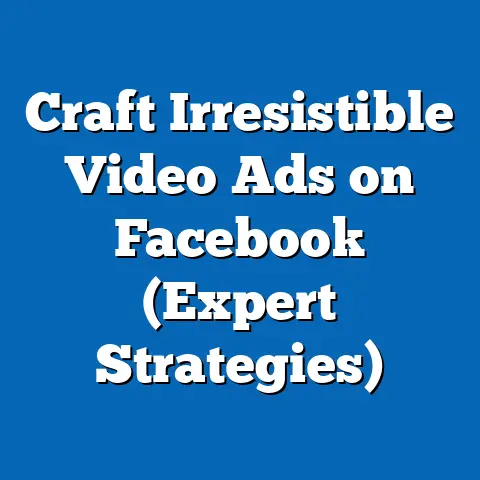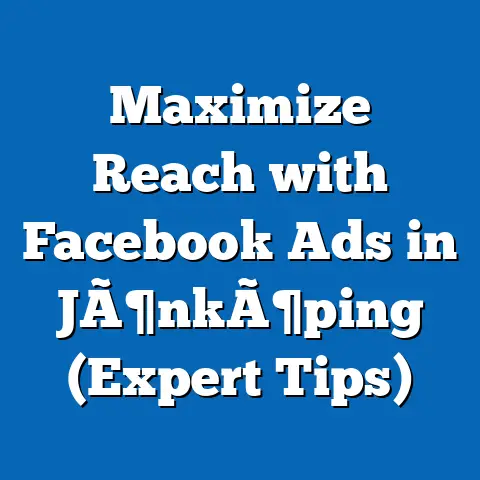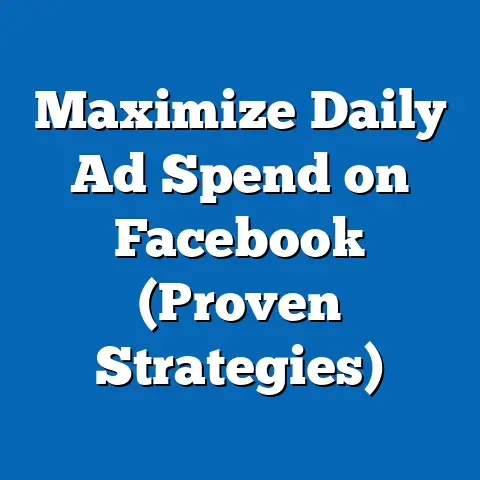Boost Trust with Transparent Facebook Ad Images (Pro Insights)
Ever feel like scrolling through Facebook is like watching a magician’s act? Flashy visuals, clever copy, and the promise of something amazing… but sometimes, you’re left wondering what’s really going on behind the curtain. In the digital age, where information is abundant and attention spans are fleeting, building trust with your audience is more critical than ever. And in the realm of Facebook advertising, one powerful tool that can help you do just that is the use of transparent ad images.
I’ve seen firsthand how a shift towards authenticity can revolutionize a campaign. I remember working with a local bakery struggling to compete with larger chains. Their ads were filled with overly-produced, generic images of pastries. We decided to try something different: real photos of their bakers in action, showcasing the passion and care they put into each creation. The response was incredible! Engagement skyrocketed, and customers felt a genuine connection to the brand.
Section 1: The Psychology of Trust in Advertising
Trust. It’s the invisible currency of the digital age. Without it, even the most compelling product or service will struggle to gain traction. Consumers are bombarded with thousands of marketing messages every day, and they’ve become increasingly adept at filtering out anything that feels insincere or manipulative. So, how do you break through the noise and establish genuine trust with your audience?
The Role of Trust in Consumer Behavior
Think about your own purchasing decisions. Do you buy from brands you don’t trust? Probably not. Trust influences every stage of the customer journey, from initial awareness to final conversion. When consumers trust a brand, they’re more likely to:
- Consider the brand: Trust makes your brand a viable option in a sea of competitors.
- Engage with your content: People are more likely to click on ads, watch videos, and interact with your posts if they trust the source.
- Make a purchase: Trust reduces perceived risk and makes consumers feel confident in their buying decision.
- Become loyal customers: Trust fosters long-term relationships and encourages repeat purchases.
- Recommend your brand to others: Word-of-mouth marketing is powerful, and trust is the foundation of positive recommendations.
Psychological Theories Related to Trust
Understanding the psychology behind trust can help you craft more effective advertising strategies. Here are a couple of key theories to consider:
- The Halo Effect: This cognitive bias suggests that our overall impression of a person or brand influences how we feel and think about their specific traits. A brand perceived as trustworthy will benefit from the halo effect, making consumers more likely to believe its claims and overlook minor flaws.
- Social Proof: People tend to follow the actions of others, especially when they’re uncertain about what to do. Positive reviews, testimonials, and social media endorsements provide social proof that your brand is reliable and trustworthy.
Trust and Engagement: The Numbers Don’t Lie
Don’t just take my word for it. Numerous studies have demonstrated the direct correlation between trust and engagement:
- Edelman Trust Barometer: This annual study consistently shows that trust in institutions, including businesses, is declining. However, brands that prioritize transparency and authenticity are able to buck this trend and earn consumer trust.
- Nielsen’s Global Trust in Advertising Report: This report found that consumers are more likely to trust recommendations from people they know (92%) than any other form of advertising. This highlights the importance of user-generated content and social proof.
- Various studies on user behavior: These studies indicate that ads that appear genuine and authentic are viewed as more trustworthy and receive higher click-through rates (CTR) compared to traditional ads.
Key Takeaway: Building trust is paramount to success in Facebook advertising. By understanding the psychology behind trust and leveraging social proof, you can create ads that resonate with your audience and drive meaningful results.
Section 2: What Are Transparent Facebook Ad Images?
So, what exactly are transparent Facebook ad images? It’s not about making your images literally see-through (although, that could be an interesting artistic choice!). Instead, it’s about using images that convey authenticity, honesty, and a genuine connection with your audience.
Defining Transparent Facebook Ad Images
Transparent Facebook ad images are visuals that prioritize honesty and realism over polished perfection. They aim to:
- Show the product or service in its natural environment: Instead of staged studio shots, use images that depict your product in real-life situations.
- Feature real people: Ditch the stock photos and showcase your employees, customers, or even yourself.
- Highlight the imperfections: Embrace the flaws and quirks that make your brand unique.
- Tell a story: Use images to convey a narrative that resonates with your audience.
Examples of Transparent Images
Here are some concrete examples of transparent images you can use in your Facebook ads:
- User-Generated Content (UGC): Feature photos or videos created by your customers. This is a powerful form of social proof.
- Behind-the-Scenes Shots: Show the inner workings of your business, from the production process to the employees who make it all happen.
- Product in Use: Depict your product being used in a real-life scenario, demonstrating its value and functionality.
- Before-and-After Photos (with realistic expectations): If your product or service delivers tangible results, showcase them with honest before-and-after photos. Be careful to avoid misleading claims or unrealistic expectations.
- Authentic Portraits: Use unposed photos of real people, capturing their genuine emotions and personalities.
Technical Aspects: File Formats, Editing Tips, and Best Practices
While the concept of transparent images is rooted in authenticity, there are still technical considerations to keep in mind:
- File Formats: Facebook supports various image formats, including JPEG, PNG, and GIF. For high-quality visuals, PNG is often preferred.
- Image Dimensions: Adhere to Facebook’s recommended image dimensions to ensure your ads look their best on all devices. Check the Facebook Ads Guide for the most up-to-date specifications.
- Editing Tips: While you’re aiming for authenticity, some light editing can still enhance your images. Adjust brightness, contrast, and color balance to create visually appealing content.
- Best Practices:
- Use high-resolution images: Avoid blurry or pixelated visuals.
- Optimize for mobile: Ensure your images look good on smaller screens.
- Consider accessibility: Add alt text to your images to make them accessible to users with visual impairments.
- Stay true to your brand: Maintain a consistent visual style across all your ads.
- Use high-resolution images: Avoid blurry or pixelated visuals.
- Optimize for mobile: Ensure your images look good on smaller screens.
- Consider accessibility: Add alt text to your images to make them accessible to users with visual impairments.
- Stay true to your brand: Maintain a consistent visual style across all your ads.
Key Takeaway: Transparent Facebook ad images are about showcasing authenticity and building trust with your audience. By using real photos, telling stories, and embracing imperfections, you can create ads that resonate with viewers on a deeper level.
Section 3: The Benefits of Using Transparent Images in Facebook Ads
The move towards transparent images isn’t just a feel-good trend; it’s a strategic advantage that can significantly boost your Facebook advertising performance. Here’s why:
Increased Authenticity
In a world saturated with perfectly curated images and heavily edited advertisements, authenticity is a breath of fresh air. Transparent images signal to your audience that you’re not trying to hide anything. You’re willing to show the real you, flaws and all. This builds trust and credibility, making consumers more likely to engage with your brand.
Enhanced Relatability
When your ads feature real people and real-life situations, your audience can see themselves reflected in your brand. This creates a sense of connection and relatability, making your message more impactful. Instead of feeling like they’re being targeted by a faceless corporation, viewers feel like they’re interacting with a brand that understands them.
Stronger Emotional Connection
Transparent images have the power to evoke emotions in a way that traditional ads often can’t. By telling stories and showcasing genuine experiences, you can create a deeper emotional connection with your audience. This emotional connection can translate into increased brand loyalty and advocacy.
Case Studies: Real Brands, Real Results
Let’s look at some real-world examples of brands that have successfully used transparent images in their Facebook ads:
- Everlane: This clothing brand is known for its radical transparency, showcasing the factories where its garments are made and providing detailed cost breakdowns. Their Facebook ads often feature photos of the workers who create their products, highlighting the ethical and sustainable practices behind their brand. Result: Increased brand loyalty and a strong reputation for transparency.
- GoPro: This action camera company relies heavily on user-generated content in its Facebook ads. They showcase stunning photos and videos captured by their customers, demonstrating the capabilities of their products in real-life adventures. Result: Increased engagement and a strong sense of community.
- Dove: This beauty brand has long championed body positivity and self-acceptance. Their Facebook ads often feature real women of all shapes and sizes, challenging traditional beauty standards. Result: Increased brand awareness and a positive brand image.
Expert Insights: The Power of Authenticity
“Consumers are craving authenticity in advertising,” says marketing expert Neil Patel. “They want to see real people, real products, and real stories. Brands that embrace transparency will be the ones that succeed in the long run.”
“Transparent images are a powerful way to build trust and connect with your audience on a deeper level,” adds social media strategist Mari Smith. “By showcasing the human side of your brand, you can create ads that are both effective and authentic.”
Key Takeaway: Using transparent images in your Facebook ads can lead to increased authenticity, enhanced relatability, and a stronger emotional connection with your audience. These benefits translate into improved brand loyalty, engagement, and ultimately, sales.
Section 4: Crafting Your Transparent Facebook Ad Images
Ready to start creating your own transparent Facebook ad images? Here’s a step-by-step guide to help you get started:
Step 1: Define Your Brand Identity
Before you start taking photos, it’s crucial to have a clear understanding of your brand identity. What are your core values? What is your brand personality? What kind of story do you want to tell? Your transparent images should reflect your brand identity and communicate your message in an authentic way.
Step 2: Identify Your Target Audience
Who are you trying to reach with your Facebook ads? Understanding your target audience is essential for creating images that resonate with them. Consider their demographics, interests, and pain points. What kind of visuals will they find relatable and engaging?
Step 3: Gather Authentic Content
Now it’s time to gather your raw materials. This could include:
- User-generated content: Reach out to your customers and ask them to share their photos and videos.
- Behind-the-scenes footage: Capture candid moments of your team at work.
- Product demos: Show your product in action, highlighting its key features and benefits.
- Customer testimonials: Record video testimonials from satisfied customers.
- Personal stories: Share your own experiences and insights.
Step 4: Tell a Story
Your images should tell a story that resonates with your audience. Consider the narrative you want to convey and how you can use visuals to bring it to life. For example, if you’re a coffee shop, you could share photos of your baristas crafting the perfect cup of coffee, highlighting the care and attention that goes into each drink.
Step 5: Embrace Imperfection
Don’t be afraid to show the flaws and quirks that make your brand unique. Imperfect images can be more relatable and authentic than perfectly polished ones. Embrace the realness and let your personality shine through.
Step 6: Edit with Care
While you’re aiming for authenticity, some light editing can still enhance your images. Adjust brightness, contrast, and color balance to create visually appealing content. However, avoid excessive retouching or filters that can make your images look artificial.
Step 7: Test and Iterate
Once you’ve created your transparent images, test them out in your Facebook ads and track their performance. Monitor key metrics like engagement rates, click-through rates, and conversion rates. Use the data you gather to refine your images and improve your results.
Key Takeaway: Crafting effective transparent Facebook ad images requires a clear understanding of your brand identity, target audience, and the story you want to tell. By gathering authentic content, embracing imperfection, and testing your results, you can create ads that resonate with your audience and drive meaningful results.
Section 5: Measuring the Impact of Transparent Facebook Ad Images
Creating transparent images is just the first step. To truly understand their impact, you need to track their performance and measure their effectiveness. Here’s how:
Key Performance Indicators (KPIs) to Monitor
Here are some key performance indicators (KPIs) you should monitor when using transparent images in your Facebook ads:
- Engagement Rate: This metric measures the level of interaction your ads receive, including likes, comments, and shares. A higher engagement rate indicates that your images are resonating with your audience.
- Click-Through Rate (CTR): This metric measures the percentage of people who see your ad and click on it. A higher CTR suggests that your images are compelling and relevant.
- Conversion Rate: This metric measures the percentage of people who take a desired action, such as making a purchase or filling out a form. A higher conversion rate indicates that your images are effectively driving results.
- Cost Per Click (CPC): This metric measures the average cost you pay for each click on your ad. Monitoring CPC can help you optimize your budget and ensure you’re getting the most value for your money.
- Return on Ad Spend (ROAS): This metric measures the revenue you generate for every dollar you spend on advertising. A higher ROAS indicates that your ads are profitable and generating a positive return on investment.
Facebook Analytics: Your Data Dashboard
Facebook provides a wealth of data and analytics to help you track the performance of your ads. Here are some key tools and features to explore:
- Facebook Ads Manager: This is your central hub for creating, managing, and tracking your Facebook ads. It provides detailed insights into your ad performance, including impressions, reach, engagement, and conversions.
- Facebook Pixel: This code snippet allows you to track website visitors who have interacted with your Facebook ads. This data can be used to optimize your ads and target your audience more effectively.
- Facebook Analytics: This tool provides a comprehensive overview of your audience, including their demographics, interests, and behaviors. This information can help you create more targeted and relevant ads.
A/B Testing: The Ultimate Optimization Tool
A/B testing involves creating two versions of your ad with slight variations (e.g., different images, headlines, or call-to-actions) and testing them against each other to see which performs better. This is a powerful way to optimize your ads and identify the most effective strategies for your target audience.
Key Takeaway: Measuring the impact of your transparent Facebook ad images is crucial for understanding their effectiveness and optimizing your campaigns. By monitoring key performance indicators, leveraging Facebook analytics, and conducting A/B tests, you can fine-tune your strategy and drive better results.
Conclusion
In today’s digital landscape, trust is the cornerstone of successful advertising. By embracing transparency in your Facebook ad images, you can build stronger relationships with your audience, enhance your brand reputation, and ultimately, drive more conversions.
I’ve seen firsthand the transformative power of authenticity in advertising. It’s not about chasing perfection; it’s about connecting with your audience on a human level. So, I encourage you to experiment with your ad strategies, explore the benefits of transparent images, and let your brand’s true personality shine through.
Now, I’d love to hear from you! Have you tried using transparent images in your Facebook ads? What were the results? Share your experiences and insights in the comments below or on social media. Let’s learn from each other and build a more transparent and trustworthy advertising ecosystem. Let’s move beyond the magician’s tricks and build something real.






